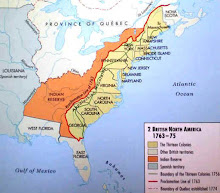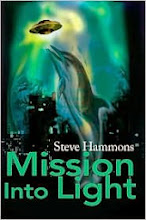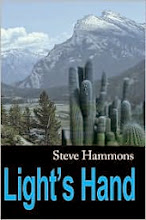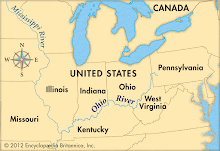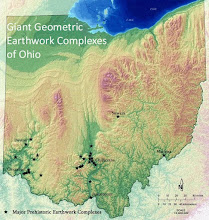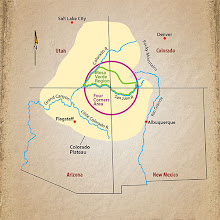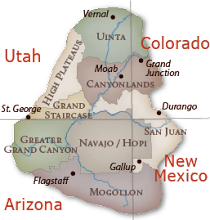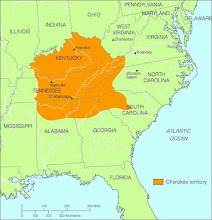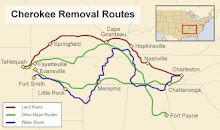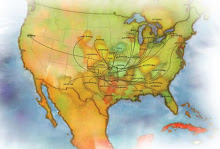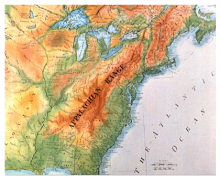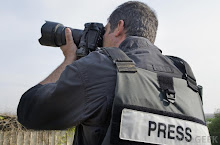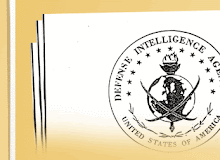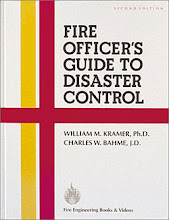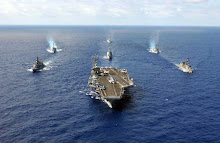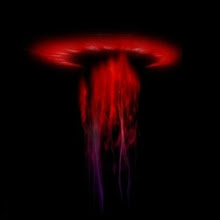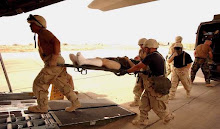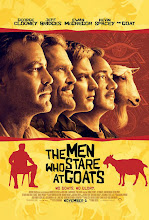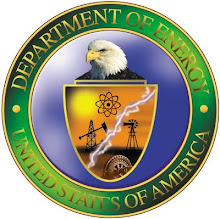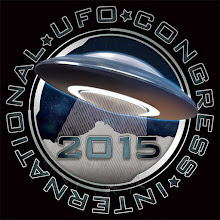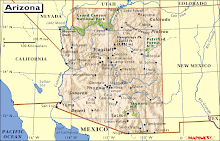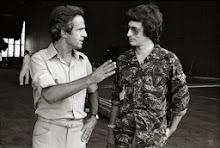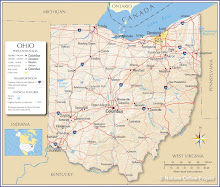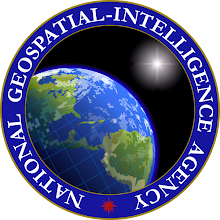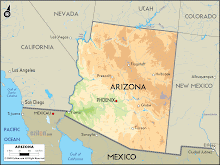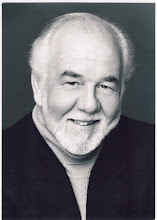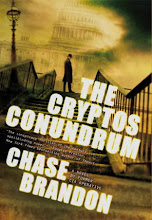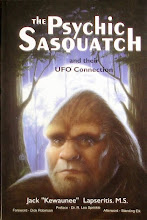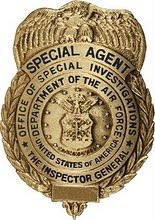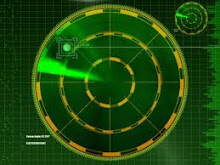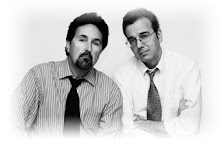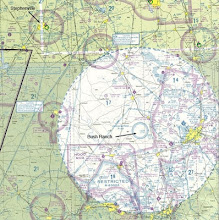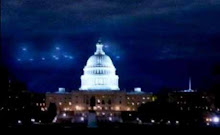By Steve Hammons
Despite the current economic, geopolitical, climatic and other disruptions and difficulties, modern human societies still seem to have vast potential to move forward using concepts related to the idea of "transcendent warfare."
The word "warfare" here should not be interpreted in a rigid way that only denotes conflict, killing and destruction.
Rather, transcendent warfare considers different ways of looking at complex situations of many kinds. This approach strives to use emerging discoveries, insights and understanding about human beings and the environments in which we function.
To expand the concept of transcendent warfare and to clarify possible underlying characteristics of certain elements involved with it, we might also use terms like transcendent power, transcendent perspectives, transcendent activities and the like.
SYNERGY AND SUCCESS
An important aspect of the concept of transcendent thinking is the openness to new discoveries, unconventional approaches and innovative methods.
In addition, transcendent approaches merge the unconventional with the conventional. They blend innovation with established methods. Transcendent efforts strive to create a synergy of various elements.
In geopolitical activities, the balanced use of hard power and soft power leads to the enhancement of both methods – and often to more successful results. Transcendent power brings another valuable asset into this mix.
Transcendent understanding, while embracing outside-the-box concepts, stays deeply rooted in tried-and-true fundamentals.
For example, this was the case in the research, development and operational activities of U.S. Government intelligence efforts involving a variety of elements commonly referred to as Project STAR GATE. Standard scientific methods were utilized to measure and verify unconventional human perception and information acquisition. These efforts were also merged with conventional intelligence, defense and security resources and actions.
WIDE APPLICATIONS
Discussions in many diverse fields are now focusing on innovative and creative ideas along with solutions to achieve various worthwhile objectives. In media, education, government, defense, medicine and health care, economics, sciences, engineering, technology, arts, agriculture, natural resources conservation and other activities, transcendent perspectives also can contribute to more effective outcomes.
How can we utilize new insights and even ancient knowledge to move forward now? How can we mix very unconventional situations and out-of-this-world discoveries with rooted down-to-Earth human experience?
These seem to be formidable challenges, similar to the challenge faced by a Navy SEAL officer who attempted to explain in a research report the surprising scientific and intelligence findings from Project STAR GATE.
Since these transcendent viewpoints can include ideas about quantum physics, human biology, human consciousness, mysterious natural phenomena and other factors, we face an interesting situation when trying to make the most of the information at hand.
However, by learning more about the topics and research associated with transcendent activities, the puzzle pieces just might start coming together.
Sunday, March 29, 2009
Transcendent warfare, transcendent power have potential
Friday, March 27, 2009
UFOs and public safety: Firefighter manual explains risks
By Steve Hammons
What do public safety officials and the general public have a need to know about possible unidentified flying objects (UFOs)?
One aspect of the phenomena that may be important involves the possible dangers of "close encounters" with these objects, craft or energy anomalies.
According to a 1992 firefighter training manual, "Fire Officer's Guide to Disaster Control," the two main hazards are powerful anomalous energy fields and psychological impacts. The authors of the guide, Charles "Chuck" Bahme and William Kramer, primarily focus on conventional concerns and duties of firefighters and fire agencies throughout most of the book.
In addition, the authors included a chapter titled Disaster Control and UFOs. In a section of the chapter, Adverse Potential of UFOs, the authors go into greater detail about some of these hazards.
Other sections of this chapter provide useful background information for public safety professionals and the public.
PHYSICAL AND PSYCHOLOGICAL
Physical dangers noted in the guide include exposure to radiation, unusual energy fields, beams or rays, according to Bahme and Kramer. These energy fields have been also been associated with disruption of communications, vehicles, aircraft and power grid operations, as well as physical injury, they point out.
Exploring potential psychological impacts of UFO contact, the guide notes that based on past incidents, public panic should be a concern of firefighters and other public safety and public health personnel.
The panic itself can contribute to accidents, injuries, distress and problematic behavior.
In this sense at least, the manual explains that fire services should consider plans to deal with outcomes from apparent UFO incidents, particularly in metropolitan regions.
We might wonder if fire departments and public safety agencies in the Phoenix, Arizona, region had such contingency plans during the March 13, 1997, "Phoenix lights" incident, even though there apparently was no public panic.
Bahme and Kramer note that there are diverse and myriad opinions about what UFOs actually are. We can also speculate that different UFOs could be different kinds of phenomena and from different origins.
The vague situation and apparent or possible secrecy of official U.S. government activities on this subject should not prevent public safety agencies from preparing for possible encounter scenarios, the manual indicates.
CONVENTIONAL AND UNCONVENTIONAL
The authors propose examples of situations that could occur when fire officials face anomalous events such as UFO encounters: Electrical field phenomena could cause firefighters' communication equipment to be disrupted, fire engines and emergency vehicles to malfunction, or portable generators and lights to fail.
In the case of significant public panic or disruption of social stability, as we saw in the exodus of New Orleans police officers during Hurricane Katrina, public safety officers might be concerned about their families and their own safety, possibly leaving fire and police agencies short-handed.
The unusual psychological effects mentioned in the guide could also impact public safety personnel: A hypnotic, paralyzing, disorienting or confusing mental and emotional state could be faced by firefighters, peace officers and others.
Bahme and Kramer point out that it may be up to public safety officers themselves to share information and coordinate an unconventional situation in a UFO encounter scenario.
Although unconventional UFO incidents are the focus of this interesting chapter from "Fire Officer's Guide to Disaster Control," the points made by the authors can also be applied to other common and unusual situations.
And, we might remember that anomalous phenomena that could impact public safety are not limited to real or perceived UFO activity.
In the closing words of the chapter on Disaster Control and UFOs, Bahme and Kramer remind fire service professionals that planning, adequate resources and good leadership are all key in dealing with public safety situations, conventional and unconventional.
Tuesday, March 24, 2009
Transcendent power has public safety applications
By Steve Hammons
The concepts of hard power, soft power, smart power and transcendent power have been used primarily in discussions about the use of military forces and diplomacy in international activities.
However, these ideas can also be applied to a wide range of other fields and endeavors including public safety.
Public safety agencies use hard power every day. Peace officers have guns, pepper spray, handcuffs, lockups and other tools at hand. Firefighters have special trucks and hoses to douse fires with water as well as advanced medical gear for paramedics and emergency medical technicians to help injured or ill people.
At the same time, these kinds of public safety efforts also use soft power such as one-to-one communication, community outreach and safety education programs.
By merging hard power and soft power, these organizations tap into smart power, the balanced use of both methods and resources in appropriate ways and circumstances.
Public safety personnel can also make good use of certain aspects of transcendent power, an idea based on the term “transcendent warfare” which was used by a former Navy SEAL officer in a 2001 graduate-level research report as part of his studies at the Marine Corps War College.
PSYCHOLOGY AND BEHAVIOR
In public safety responses involving hard power and soft power, human behavior is a key element.
For peace officers, situations involving dangerous behavior, unlawful activity or domestic violence all stem from human behavior. Human behavior results from or in tandem with human psychology, perception, awareness and consciousness.
The same could be said about fire officials. They deal with accidents and injuries as well as fires, many of which could have been prevented by safer behavior. Again, behavior flows from human awareness.
Unsafe behavior can be prevented or mitigated. People can be made more aware of situational dangers around them.
Situational awareness by public safety personnel, children and teens, and average adult citizens can benefit from some of the ideas included in transcendent power and transcendent warfare. Safety steps can be implemented ahead of emerging danger. Danger can be anticipated and possibly perceived ahead of time.
How can research, development and operational experiences involving transcendent warfare help in these ways?
When the SEAL officer made reference to the idea of transcendent warfare, he was, in part, referring to advanced research and operational activities of the U.S. military and intelligence communities in the 1970s, ‘80s and ‘90s.
This research into human awareness and cognition found that humans seem to truly have a “sixth sense.” That is, we have the ability to use our intuition, feelings and gut instincts to sense more about various situations and develop information based on these perceptions.
The then-secret R&D and operations of what came to be known as Project STAR GATE used new understanding about the human sixth sense to gather intelligence information for military and intelligence purposes.
USING THE SIXTH SENSE
It has sometimes been said that peace officers can develop “cop instincts.” In other words, they start to get feelings and perceptions about criminal behavior.
Sometimes these perceptions may be based on subtle cues they pick up visually – someone is acting in suspicious or deceptive ways, or something just doesn’t appear as it should be.
However, other times there may be awareness that is not obtained from the normal five senses of sight, hearing, smell, taste or touch. The perception of a sixth sense might come into play, independently or in sync with what the officer may perceive in more conventional ways.
Emergency medical personnel, when assessing a person’s injuries, may see various symptoms and indicators. There may also be an absence of certain obvious injury. This can be the case with internal bleeding, head trauma and other injuries. Can sixth-sense perception, in combination with other tried and true medical assessment methods, help in evaluating a victim’s condition?
When fighting a structure fire, in addition to knowledge about fire’s effects on various building materials, can a firefighter’s sixth sense help anticipate a building’s catastrophic collapse?
In short, can we use our sixth sense to gather intelligence information or understanding about a range of situations that affect public safety in our everyday lives and in the performance of professional duties?
Based on significant research and operational activities conducted by U.S. military and intelligence personnel, the answer seems to be yes.
By learning more about transcendent warfare, Project STAR GATE and similar resources, public safety personnel may be able to use new and advanced knowledge of human awareness and perception to protect the public, enhance their professionalism and help ensure their own survival.
Monday, March 23, 2009
Wounded troops: DARPA project to regrow human tissue enters next phase
By Steve Hammons
Will U.S. troops who have had serious war injuries find new help from ongoing research to regrow damaged human tissue?
According to an announcement March 23, 2009, the U.S. Defense Advanced Research Projects Agency (DARPA) has extended its contract with a Massachusetts biotechnology company for a research program on the regeneration of muscle tissue lost or damaged by traumatic injury.
DARPA’s long-range goal is to discover and optimize the natural regenerative abilities of the human body to heal war injuries experienced by U.S. troops, including injuries involving bone, muscle, nerves and other soft tissue.
What about people who have had limbs amputated? Could whole hands, arms and legs be regrown, similar to the way salamanders and starfish regrow limbs?
RESEARCHERS PURSUE DISCOVERIES
The company involved in the contract, CellThera, is part of the Bioengineering Institute (BEI) of the Worcester Polytechnic Institute (WPI).
A WPI press release notes that DARPA awarded CellThera a one-year $570,000 contract for research into regenerating mammalian muscle tissue. The contract could be extended for a second year. WPI will be a subcontractor for part of the program.
DARPA funded the first phase of the tissue regeneration program beginning in 2006 in a joint effort between CellThera, WPI and associates at Tulane University, the press release stated.
In that phase, the research team was successful in reprogramming mouse and human skin cells to behave more like stem cells, and more able to begin regrowing tissue.
In the next phase of the project, researchers will attempt to “reprogram and engineer cells to replace damaged skeletal muscle and to restore the normal function of that muscle,” according to the WPI press release.
Raymond Page, PhD, serves as principal investigator for WPI's part of the research. Page is an assistant professor in BEI and WPI's Department of Biology and Biotechnology.
In the next phase, George Pins, PhD, associate professor of biomedical engineering at WPI, joins efforts of the project. Pins developed cell-delivery strategies relevant to the program’s goals. Raymond Dunn, MD, will lead another team in the new research phase. Dunn is professor of surgery and cell biology at the University of Massachusetts Medical School and chief of plastic and reconstructive surgery at UMass Memorial Medical Center.
WOUNDED WARRIORS AND BIOLOGY
Many U.S. troops have sustained serious injuries in the wars in Iraq and Afghanistan. These wounds include traumatic and surgical amputations of legs and arms, burns, severe head and face trauma and other significant damage to body tissues.
Although improved body armor has prevented many deaths, as a result many troops survived with injuries so severe that they would have died in earlier wars.
Improvised explosive devices (IEDs) – roadside or vehicle-borne bombs – have been particularly deadly and damaging.
The DARPA-sponsored research may lead to new discoveries and medical applications that can help these seriously injured troops.
Currently, scientists understand much of the biology about how certain creatures regenerate limbs and other tissue. When salamanders and newts lose a limb, they create new "progenitor cells," also called "precursor cells." These cells gather at the site of the injury, forming a "blastema."
The blastema continue to grow and specialize into cells that form the nerves, bones, cartilage, muscles and skin to create a new limb.
For mammals, this ability typically occurs only in the fetal stage. Yet, new research and bioengineering activities have made progress in learning more about these processes.
Will the research soon progress to applications directly to humans? Depending on the progress made studying the genetic, cellular, chemical and other factors involved, human research could begin some day.
If DARPA-funded investigations into this field lead to success in regrowing selected human tissue, or even entire limbs and organs, people and children around the world with injuries, diseases and other significant medical problems could benefit in ways we can hardly imagine.
Thursday, March 19, 2009
Joint competency in transcendent power needed
By Steve Hammons
When Marine Corps Gen. James Mattis addressed the House Armed Services Committee on March 18, 2009, he made some key points that may be worth looking at from the perspective of "transcendent power" and "transcendent warfare."
Mattis is commander of the U.S. Joint Forces Command and his report to the committee included concepts that are applicable more broadly than many people might assume. There may be additional implications, ramifications or elements involved.
He pointed out that the Joint Forces Command is one of 10 combatant commands in the DoD and oversees a force of 1.16 million active duty, National Guard and Army Reserve soldiers, Navy personnel, Air Force personnel and Marines.
One theme of Mattis' presentation to the committee included the ideas involved in irregular warfare (IW). This concept is similar to terminology like unconventional warfare or guerilla warfare, yet there are now more complex and sophisticated considerations involved in IW preparedness and activities.
Mattis stated that a "core competency" in IW is needed by joint forces.
He also mentioned the term "hybrid warfare" which combines IW and more conventional methods. Mattis stated that adversaries may use methods of a "hybrid nature that combine any available irregular or conventional mode of attack, using a blend of primitive, traditional and high-tech weapons and tactics."
"We must have balanced and versatile joint forces ready to accomplish missions across the full spectrum of military operations — from large-scale, conventional warfare to humanitarian assistance and other forms of 'soft' power," he said.
As we delve into the ideas of soft power, smart power and what has been termed transcendent power, we might ask the same question Mattis rhetorically asked: "What capabilities are required?"
CONVENTIONAL AND UNCONVENTIONAL
One key element that Mattis noted was for education and training of joint personnel.
"A trained warrior may perform acceptably in a conventional operation, but irregular and hybrid wars demand highly-educated warriors to prevail," he explained.
Mattis added, "Special emphasis must be placed on human, cultural, language, and cognitive skills. A 'cognitive' warrior knows how to acquire knowledge, process information from multiple sources, and make timely, accurate decisions in complex, ethically challenging and ever-changing environments."
Here is where we might apply lessons learned from research into transcendent warfare. Cognition includes perceiving, thinking and understanding. Analyzing in the context of overall situational awareness and in complex environments is challenging – and necessary.
In these areas, innovative and outside-the-box approaches are useful, or even fundamentally crucial. This is especially true when significant research, development and operational experiences have demonstrated the value of certain methods.
"So, we must be prepared to think the 'unthinkable,' using our study and imagination to help us defeat the enemy," Mattis noted.
Imagination, deep and wide awareness, optimized human perception and other elements of human consciousness are key aspects that can be helpful. Transcendent warfare and transcendent power embrace research and operational successes that utilize all of these factors – and more.
"We must employ to our advantage the power of both inspiration and intimidation, each in the appropriate measure, to confound our enemies," Mattis stated.
Transcendent warfare and transcendent power can accomplish both of these objectives and might also be candidates for core competency by joint forces.
WHOLE GOVERNMENT, WHOLE NATION, WHOLE EARTH
Mattis also told the congressional committee that current and future challenges require "whole-of-government" approaches. He said military personnel must connect with civilian counterparts and create a synergy of effort.
Sharing information is an important element of this approach, he said.
"Essential to a whole-of-government approach for applying all aspects of national and international power is the ability to share information and situational awareness among all partners."
When information and perspectives are appropriately shared, an "interagency common operational picture" is created, Mattis explained.
This seems to take us back to the topics of education, training and communication efforts discussed in regard to competencies in soft power, smart power and irregular warfare activities.
When thinking about the advantages of a whole-of-government viewpoint that Mattis discussed, we might wonder if a whole-of-nation approach would produce even greater benefits. Would there be greater synergy if a more unified and more powerful joint effort involved broader and deeper elements of American society and of other groups and nations?
What additional kinds of resources and assets are out there if we use our intelligence and situational awareness to examine and optimize transcendent power?
Concurrent with ensuring security, what other accomplishments can be achieved by transcendent power in conducting humanitarian activities, implementing peace operations, expanding scientific knowledge, assisting human development, providing for increased prosperity around the world and improving the long-term prospects of the human race on Earth?
These questions deserve answers. And at this time we seem to be well-positioned to begin to comprehend those answers and the methods to get on the path to them.
Developing widespread joint core competency in transcendent warfare may be the first step on the path.
Friday, March 6, 2009
Transcendent power is natural resource for ARPA-E
By Steve Hammons
The new Advanced Research Projects Agency for Energy (ARPA-E) has been allocated $400 million in the stimulus package to conduct research and development on innovations to optimize our energy resources and options.
Part of ARPA-E’s challenge will be technological – identifying, analyzing and funding promising advanced energy technologies and approaches of various kinds.
Another task will be educating and communicating with the American people, the media, the administration, Congress, businesses, other governmental entities and additional stakeholders about ARPA-E’s efforts and directions.
In these fundamental tasks, ARPA-E can make good use of certain aspects of "transcendent power" – a concept that incorporates leading-edge research, emerging discoveries, information acquisition, human awareness and perception, soft-power communication and other components.
JOINT CONCEPTS
The terms transcendent power and smart power have sometimes been used in connection with military, diplomatic and international contexts, including in relation to the ideas of soft power and transcendent warfare.
However, we can also apply the basic concepts of transcendent power and smart power to a wide range of human activities, including those of ARPA-E and the U.S. Department of Energy.
The terms transcendent power and smart power can also refer to smart energy that transcends previous sources, usage and technologies.
As we know, energy security is directly connected to military security, international peace, global economics and human development around the world.
So, applying transcendent warfare, transcendent power and smart power concepts to energy-related challenges (and a variety of other fields) makes sense.
Since transcendent power also refers to the human creativity, knowledge, discovery, education, communication and leading-edge research of many kinds, transcendent power and transcendent energy R&D go hand in hand.
TRANSCENDENT ENERGY
ARPA-E, like its namesakes the Defense Advanced Research Projects Agency (DARPA) and the newly-formed Intelligence Advanced Research Projects Activity (IARPA), will fund shorter-term and longer-view strategic R&D.
Energy Secretary Steven Chu plans to get the ARPA-E staff moving on the distribution of R&D funds to promising projects in renewable energy, biofuels, “smart-grid” technologies, efficiencies, development of advanced batteries and other goals.
In addition to the $400 million for ARPA-E project funding, the stimulus package also includes approximately $43 billion for a variety of technology, power grid and energy efficiency activities.
In the American southwest with its nearly-constant sunshine and vast open spaces, solar power looks promising. In farming regions, use of certain low-cost, high-yield crops and agricultural waste products could be part of biofuel solutions. New products, devices and technologies for vehicles, homes, businesses and industries are also being developed.
Recently, DARPA provided $35 million to the San Diego-based companies SAIC and General Atomics to research and develop the jet fuel JP-8 created from algae.
According to published reports, algae-based jet fuel R&D is a focus for several companies in San Diego as well as a local research consortium, the Scripps Research Institute, the Scripps Institution of Oceanography and University of California San Diego.
R&D into solar, biofuel, algae-based jet fuel and many other activities can all be considered part of transcendent power and transcendent energy in a variety of ways.
As we learn more about the many elements of transcendent power, our understanding of the future potential in the fields of energy, discovery, insight, knowledge and R&D of many kinds may surprise us with the rich possibilities on the horizon.
Thursday, March 5, 2009
Exploring and deploying soft power, transcendent power
By Steve Hammons
The terms "transcendent warfare" and "transcendent power" seem to have much in common with conventional and unconventional military approaches, international diplomacy, understanding cultural influences, communication activities and other elements we usually think of when talking about soft power, hard power and smart power.
However, we might only be seeing part of the picture of transcendent warfare and transcendent power if we limit our views to the international military-diplomatic-cultural-communication aspects of soft power, hard power, smart power and transcendent power.
Transcendent power is probably not only something we do "out there" in the international community.
More likely it is something that is based on emerging understanding of leading-edge research within our own society including scientific circles, military and intelligence personnel, educators, the arts, health professionals, clergy, media, researchers and average Americans.
In fact, more general understanding about fundamental aspects of transcendent power seems to be emerging all around the world.
We don't need to create transcendent power. It already exists. We simply need to understand it and apply this understanding in our various endeavors.
But that may be easier said than done.
CONCEPTUALIZE AND ACTUALIZE
The Navy SEAL officer who used the term transcendent warfare in a graduate-level paper for the Marine Corps War College in 2001 wrote that the challenge for the U.S. in regard to this idea is, in part, "the ability to conceptualize and subsequently actualize an entirely new form of warfare that transcends all previously known models."
He noted that transcendent warfare includes "qualities that elude definition thereby making the above challenge more difficult" and that "ascribing to a pat definition may in fact signal inability to comprehend the concept altogether."
Transcendent warfare and transcendent power appear to have a lot to do with human awareness, perception and understanding. This, of course, includes all of us.
Other aspects of the concepts might be the ability to acquire accurate and useful information, as well as to appreciate human characteristics such as integrity, honor, compassion, love, strength, fellowship, teamwork and similar qualities in ourselves and others.
Human consciousness, which includes these elements and more, is a fundamental aspect of transcendent power. Ongoing discoveries in quantum physics, astrophysics, biological sciences and other fields also help to expand our perception of the breadth and depth of transcendent power.
True transcendent power most likely includes only the approaches that optimize human functioning in the pursuit of legitimate and honorable objectives. The SEAL officer pointed out that transcendent warfare offers challenges and opportunities "for the exploration and advancement of human and/or institutional potential."
The exploration and advancement of human potential and human development associated with transcendent warfare and transcendent power may be quite significant. And, it affects Americans and people around the world.
GRASS ROOTS AND LEADERSHIP
How do we integrate and optimize the components of soft power, hard power and smart power nationally and internationally? How do we grasp and deploy transcendent warfare and transcendent power?
An open mind and a willingness to look at the state of the research on human perceptual abilities may be a good place to start.
After all, the SEAL officer's paper was somewhat focused on U.S. military and intelligence community research, development and operations involving unconventional methods of intelligence acquisition related to human consciousness, perception and awareness.
Of course, back in the 1970s, '80s and '90s when these activities were taking place, we were living in a different time. Many factors that were in play then have changed somewhat.
Still, comprehending and implementing unconventional and innovative approaches can be challenging. For example, there may be a need to readjust to the emerging leading-edge research in the field of human consciousness. As the SEAL officer stated in his report, "Such a readjustment in thinking will require dynamic, visionary leadership ..."
In addition to leadership, another aspect of optimizing transcendent warfare and transcendent power is understanding that they probably are also grass-roots phenomena. They are part of a force that is integral to humanity, Nature and the Universe.
It may be safe to say that transcendent power goes with the flow of much larger forces around us and within us. We use it and it uses us in ways we may not always fully comprehend.
Tuesday, March 3, 2009
Transcendent power reshapes hard power, soft power, smart power
By Steve Hammons
Greater understanding and use of “transcendent power” can result in the optimization of hard power, soft power and what has been referred to as smart power.
What is transcendent power?
In 2001, a Navy SEAL officer submitted a research paper as part of his studies at the Marine Corps War College. The paper was submitted in partial fulfillment of the requirements for the Marine Corps War College, Marine Corps University, Marine Corps Combat Development Command, Quantico, Virginia.
The SEAL, then-commander L.R. Bremseth, had conducted interviews and looked into U.S. defense and intelligence community activities on human perceptual abilities and unconventional intelligence acquisition.
Bremseth’s paper, “Unconventional Human Intelligence Support,” looked at “transcendent and asymmetric warfare implications” of leading-edge and emerging research and development regarding human perception and consciousness as well as innovative intelligence acquisition methods.
In his report, Bremseth wrote, "The real challenge for the United States is not asymmetric warfare, but rather what this writer calls transcendent warfare, the ability to conceptualize and subsequently actualize an entirely new form of warfare that transcends all previously known models."
UNCONVENTIONAL, ASYMMETRIC APPROACHES
He explained, "Granted, transcendent warfare reflects Zen-like qualities that elude definition thereby making the above challenge more difficult."
"Non-linear/multidimensional and abstract/metaphysical are tentative terms that convey this concept, however, ascribing to a pat definition may in fact signal inability to comprehend the concept altogether," he wrote.
In addition, Bremseth made general and specific recommendations in the paper and pointed out that, "... transcendent and asymmetric warfare necessitate and exemplify proactive approaches that envision these efforts as opportunities ... for the exploration and advancement of human and/or institutional potential. Such a readjustment in thinking will require dynamic, visionary leadership ..."
He suggested that we would be wise to, "Explore a myriad of phenomena having potential military applications with the goal of developing transcendent and asymmetrical warfare approaches."
Bremseth’s paper was written in the context of a military advanced education institution, and, of course, he was an officer of an elite special operations force. As a result, his report is oriented toward defense challenges and opportunities.
At the same time, the idea of transcendent power can be applied to a wide and deep range of activities that involve domestic and international efforts, public diplomacy, humanitarian operations, peace and security operations, human development projects and similar endeavors.
The ideas of transcendent warfare and transcendent power are directly tied to human psychology and human consciousness. There are both conventional and unconventional aspects.
Because human behavior flows from human psychology and consciousness, when we look at leading-edge and emerging research in these fields, we can understand more about ourselves and others. We can learn more about the human race.
This, in turn, can assist us in recognizing solutions and constructive approaches to many kinds of challenges.
WIDER, DEEPER APPLICATIONS, IMPLICATIONS
In addition, as we explore and fine-tune our understanding of transcendent power, the U.S. can be positioned as a leader in this area. This leadership benefits all of humanity.
We can deploy information, communication, education and training about various elements of transcendent awareness.
It is probable that by enhancing transcendent awareness, progress can be made in many areas of human activity including peace and security, energy resources, agriculture and food supplies, natural resources conservation, education, poverty mitigation, health care and medical research as well as scientific research of all kinds.
Although transcendent awareness is undoubtedly emerging on its own to some degree, we can help this process along by being proactive.
We can develop and implement activities that conduct research related to transcendent power and how this information and understanding can be optimized for U.S. national interests and to benefit people internationally.
For example, project components could include open-source research and information acquisition, analysis of this information and then the development of communication, education and training approaches.
There probably is potential for great synergy in these kinds of efforts that could have far-reaching constructive outcomes for the U.S. and the international community.



















